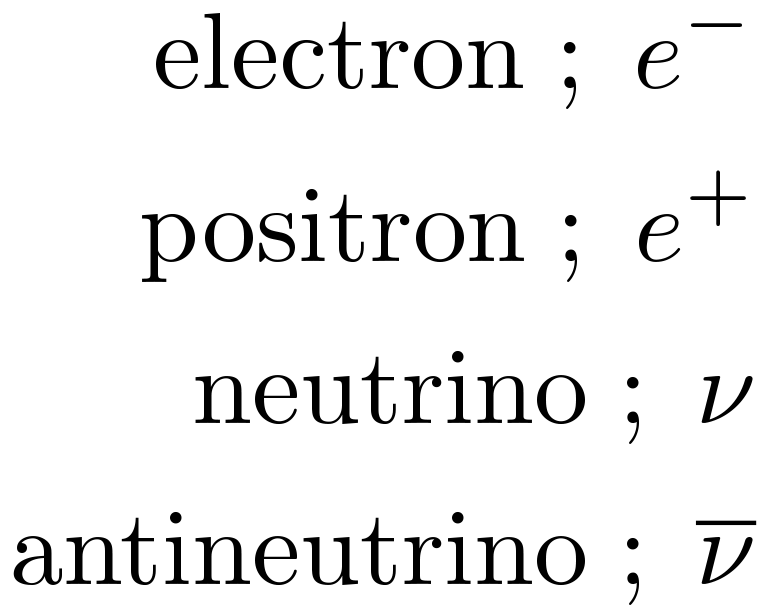 according to Hawley and Holcomb (1997). The content of the Universe consisted of a dilute gas of free streaming neutrinos , photons
according to Hawley and Holcomb (1997). The content of the Universe consisted of a dilute gas of free streaming neutrinos , photons  ,
,electron positron pairs

and trace amount of nucleons
 (the protons and neutrons) as noted by Boesgaard and Steigman (1985). The temperature and densities were still very high, but dropped sufficiently so that the nuclei of atom could remain stable. The creation of atomic nuclei through nuclear reactions called nucleosinthesis, thought to be commenced at this point. Hence, this period in the big bang is known as the nucleosynthesis epoch. Olive (1999) noted that Big Bang Nucleosunthesis (BBN) is the theory explaining the origins of the light elements D;3 He;4 He and 7Li and their primordial abundances. Ellis (2011) commented that, the theoretical framework for BBN is based on Friedmann-Lemaitre-Robertson-Walker cosmology and a network of nuclear reactions.
(the protons and neutrons) as noted by Boesgaard and Steigman (1985). The temperature and densities were still very high, but dropped sufficiently so that the nuclei of atom could remain stable. The creation of atomic nuclei through nuclear reactions called nucleosinthesis, thought to be commenced at this point. Hence, this period in the big bang is known as the nucleosynthesis epoch. Olive (1999) noted that Big Bang Nucleosunthesis (BBN) is the theory explaining the origins of the light elements D;3 He;4 He and 7Li and their primordial abundances. Ellis (2011) commented that, the theoretical framework for BBN is based on Friedmann-Lemaitre-Robertson-Walker cosmology and a network of nuclear reactions.
BBN requires temperatures greater than 100keV and corresponds to time scales less than 200 seconds. It was necessary to achieve a density n  . The current density of visible matter is
. The current density of visible matter is
 . The current density of visible matter is
. The current density of visible matter is
In the early Universe at temperatures T < or ~ to 1MeV , conditions for the synthesis of the light elements were attained. Weak interactions were in equilibrium at higher temperatures. The following processes fix the ratio of number densities of neutrons to protons.
(a neutron plus a positive electron (positron) create a proton and an anti-nuetrino and vice-versa, a neutron plus a nuetrino create a proton and electron, from a nuetron a proton, electron and antinuerino is fixed).
The ratio of neutrons to protons at equilibrium at temperature T is given by a Boltzman factor:
is the neutron proton mass difference,1.3 MeV. Olive (1999) notes that, when the temperature  the ratio of neutron to proton was
the ratio of neutron to proton was
Reference:
1. K. A. Olive. Primordial big bang nucleosynthesis. ArXiv Astrophysics e-prints, Jan. 1999. URL http://arxiv.org/abs/astro-ph/9901231.
2. A. M. Boesgaard and G. Steigman. Big bang nucleosynthesis - theories and observations. ARA&A, 23:319{378, 1985. doi: 10.1146/annurev.aa.23.090185.001535.
3. G. F. R. Ellis. Inhomogeneity eff ects in cosmology. Classical and Quantum Gravity, 28(16):164001, Aug. 2011. doi: 10.1088/0264-9381/28/16/164001.





No comments:
Post a Comment